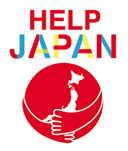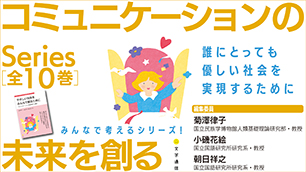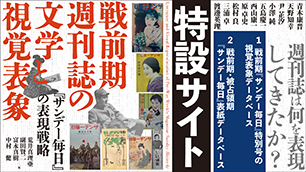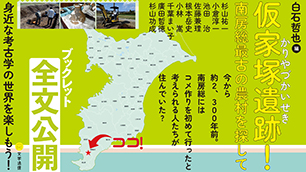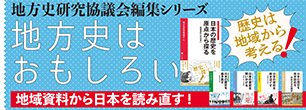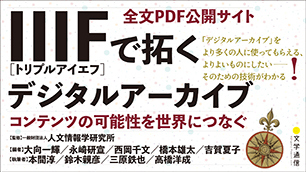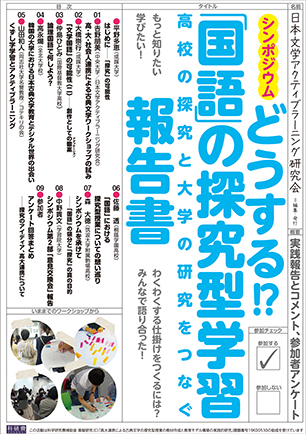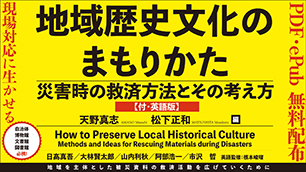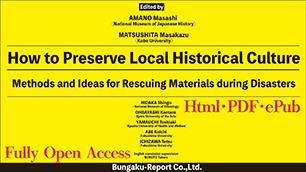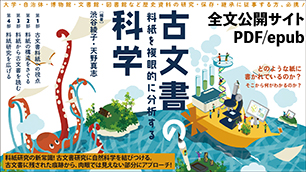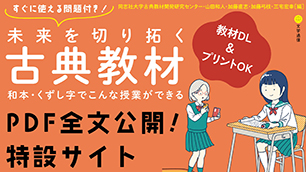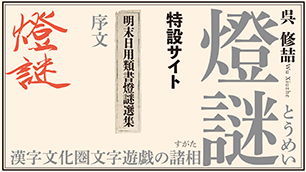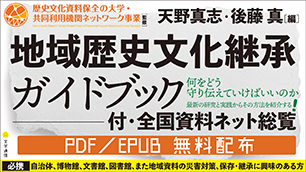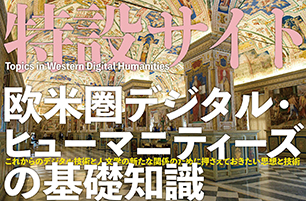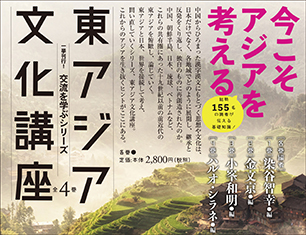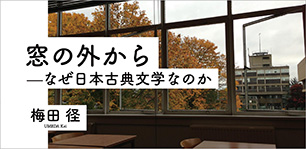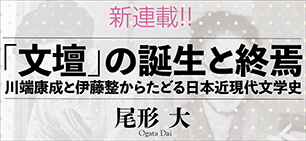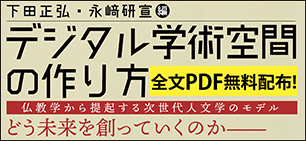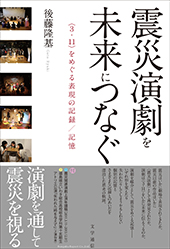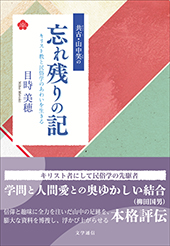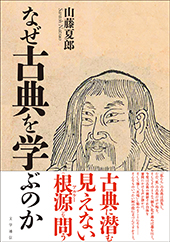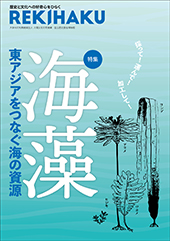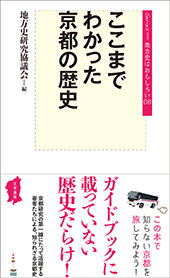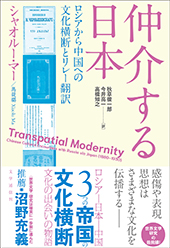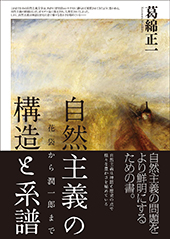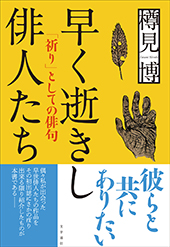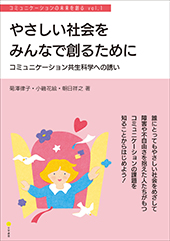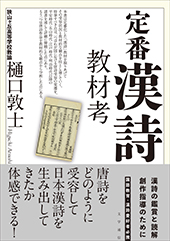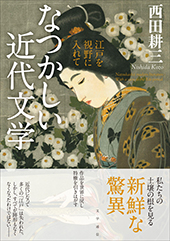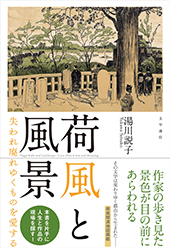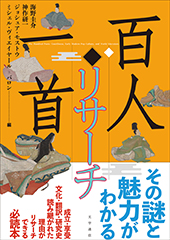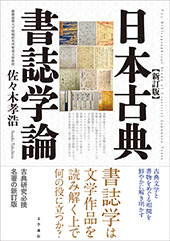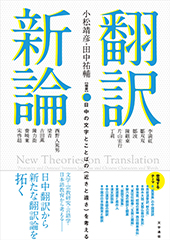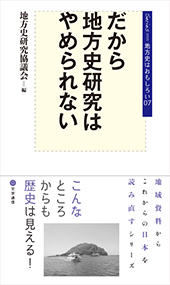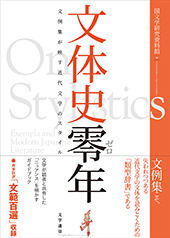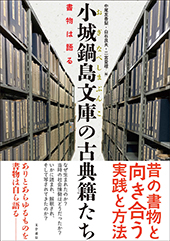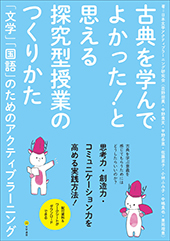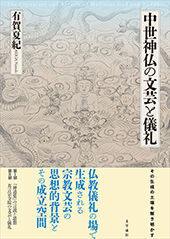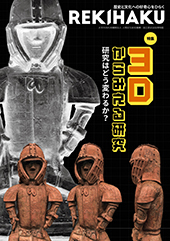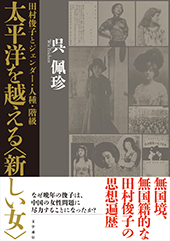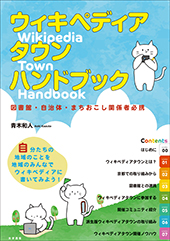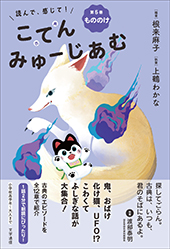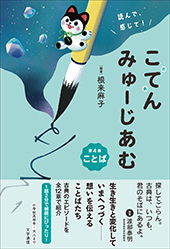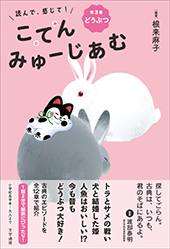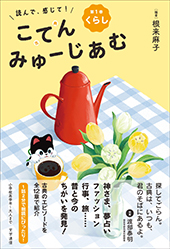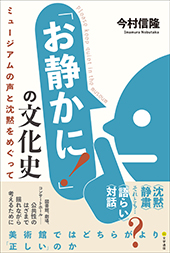Chapter 9 Communicating with Local Communities / ABE Koichi (Fukushima University)
Download PDF
Chapter 9
Communicating with Local Communities
ABE Koichi (Fukushima University)
Introduction
This Chapter covers the challenges associated in communicating with local communities, which is necessary in disaster countermeasures and material rescue for preserving local historical culture. The target of our discussion is mainly the Siryo-net (Kobe) that rescues and preserves historical materials that are mostly in private ownership (for further information on the Siryo-net, see Part 1). When rescuing materials in disaster-affected areas, rescuers are rarely familiar with the area through surveys and research. In most cases, rescuers are visiting the area for the first time because of a disaster. Under such circumstances, for external experts to meet the local government officials in charge of cultural properties, local historians, owners, and residents, and perform material rescue activities smoothly, communicating with local communities is obviously an important key. It is clear that, if opportunities for locals and outsiders to become acquainted prior to a disaster exists, work would be more effective, thereby leading to better results.
However, "communicating with local communities" is not simple as it is extremely difficult to generalize how people will convey their ideas to each other, which is the core of diverse communication. It is also not suited to the creation of models or manuals. Japan has about 30 Shiryo-Networks (historical materials networks) across the nation, some of which have ample experience and have achieved notable results. However, given the page allowance limit, I focus on the Fukushima Shiryo-Network of which the author is the representative, and the Soma Shiryo-Network of which the author is an executive.
1. Launching the Fukushima Shiryo-Network and Challenges Faced
The Fukushima Shiryo-Network was launched in November 2010 as a liaison for experts, government, and citizens by progressively disbanding the Fukushima Cultural Heritage Preservation Network established in 2005 by Fukushima Prefecture Cultural Promotion Corporation (Corporation, presently called Fukushima Prefecture Cultural Promotion Foundation) with the Corporation, Fukushima Prefectural Museum, Fukushima Prefectural Historical Society, and Fukushima University as promoters. The idea of HONMA Hiroshi from the Corporation, who liaised and coordinated each facet, was that the participation of citizen volunteers is essential in the comprehensive understanding and preservation of historical and cultural heritage including undesignated items. To gain the trust of owners, the participation of government personnel in charge of cultural properties is also recommended, which allows for a horizontal link beyond municipalities.
However, merely four months after its launch, the Great East Japan Earthquake and Fukushima Daiichi Nuclear Power Plant Accident occurred in March 2011. The Fukushima Shiryo-Network chose the representative and secretariat in April and took on the work of rescuing materials of municipalities and individuals who requested support. By June, the Fukushima Shiryo-Network had surveyed and conducted rescue in 25 cases, but the challenges faced were diverse. The main challenges were as follows:
(1) Inadequate data on the location necessary to perform the rescue: There was no location list, leaving volunteers to rely on the Fukushima Prefecture Ancient Documents Location Confirmation Survey Report compiled in 1980 by the Fukushima Prefecture Board of Education, or on individuals providing the materials.
(2) The local government not participating with the Fukushima Shiryo-Network: Presently, the relationship is still one-sided, limited to e-mails.
(3) Inadequate communication with local communities: The presence of the Fukushima Shiryo-Network is not well known, and even if there are materials needing rescue, the requests do not reach the Fukushima Shiryo-Network. This situation has not improved.
(4) A lack of citizen volunteers: From the viewpoint of crime prevention, the information on the disaster-affected areas was only shared among those involved. This limited the rescue activities to those who were available from the promoting agencies, limiting the recruitment of volunteers.
(5) Issues associated with being the liaison: The Fukushima Shiryo-Network was unable to take on responsibility for the management of rescued materials. It was also difficult to secure temporary storage and a place to work.
In terms of the topic of this Chapter, the activities that began while "communicating with local communities" remained inadequate.
In May 2012, the Fukushima Prefecture Damaged Cultural Properties Relief Headquarters was established. When rescue activities began at museums of the former restricted areas of Futaba, Okuma, and Tomioka Town in the summer, interested parties' interests shifted to the former restricted areas. The Fukushima Shiryo-Network, as merely the liaison, could not get involved in any way. As the author put effort into tasks at a temporary storage outside of the former restricted areas as a member of Fukushima University, promotors worked on the rescue of the cultural assets through each of their official positions. However, rescue cases in private ownership decreased in number, and the presence of the Fukushima Shiryo-Network was forgotten. This was a challenge unique to acting as the liaison.
2. Development of the Fukushima Shiryo-Network
The author became the representative in July 2012 and worked to overcome the challenges by shifting the axis of substantial activities to the university and continuing the routine activities with students while keeping the Fukushima Shiryo-Network as the base liaison for the promotors.
(1) Regarding the inadequate data, with the support of a research assistant, a list of owners in the prefecture was organized using Microsoft Excel wherever possible so that they could be searched and identified as needed. As a result, in Shinchi Town, which was affected by an intensity 6+ earthquake during the 2021 Fukushima Earthquake, we compared an owner list, Shinchi Town History (as the regulations on personal information were not strict at the time, owners' addresses were recorded in full) with an older residential map to prepare a list. We cooperated with the Miyagi Shiryo-Network and attempted to conduct a location survey on-site. During this process, we were able to rescue materials from three commercial storage locations that were not on the list. This is a good example of how true information cannot be found unless one goes to the site.
(2) There is no change in the lack of participation by municipalities in the Fukushima Shiryo-Network. A network between municipalities was realized through the "Agreement on Mutual Support during Disasters Regarding Cultural Assets in Fukushima Prefecture" between Fukushima Prefecture and 59 municipalities, which was the result of the formulation of the Fukushima Prefecture Cultural Assets Preservation and Utilization Guidelines in March 2020. In November of the same year, the "Agreement on Support Activities during Disasters Regarding Cultural Assets in Fukushima Prefecture" was signed between the prefecture and four involved organizations including the Fukushima Shiryo-Network. Information is exchanged and training is provided once a year through a liaison meeting. The Fukushima Shiryo-Network was to indirectly cooperate with municipalities through liaison meetings, finally taking the steps it should have been able to take in the beginning. However, the rescue targets were limited to cultural assets managed by municipalities during disasters, and mutual support of routine removal activities was not assumed. The Network is not utilized to rescue undesignated cultural assets that are privately owned. As such, many challenges remain.
Tomioka Town and Fukushima University have signed an agreement, and the project team at the town hall continues to receive support with the storage and recording of materials rescued via donations and requests. The Fukushima Shiryo-Network offers support by recruiting citizen volunteers during busy times.
(3) Regarding the inadequate communication with communities, we attempted to solve this problem through student education. In Kunimi Town, located in the northern part of the prefecture, we conducted a damaged material survey with cooperation from those in charge of cultural assets, local history research associations, and neighborhood associations. As a result, we confirmed multiple unintroduced materials that were not known by Kunimi Town History. Based on this result, we rediscovered local cultural assets from the perspective of students while learning from the locals, and developed the "Local Marugoto Museum" activity, which leads to material preservation [Photo.1: Marugoto Museum (Kaida, Kunimi Town)]. This activity shifted the stage to the Yanagawa neighborhood of Date City, where the students' survey study was advanced with the cooperation and guidance of local historical research associations and NPOs. Even during the COVID-19 crisis, we cooperated with the locals of Kanayagawa Ward where the university was located, and conducted a survey study of Kannon worship, hymns, and history. These were all successful thanks to the understanding and cooperation of historians and the residents who know the local communities well. The students' survey results were summarized in a pamphlet and are being used for a better understanding of the area and tourism.
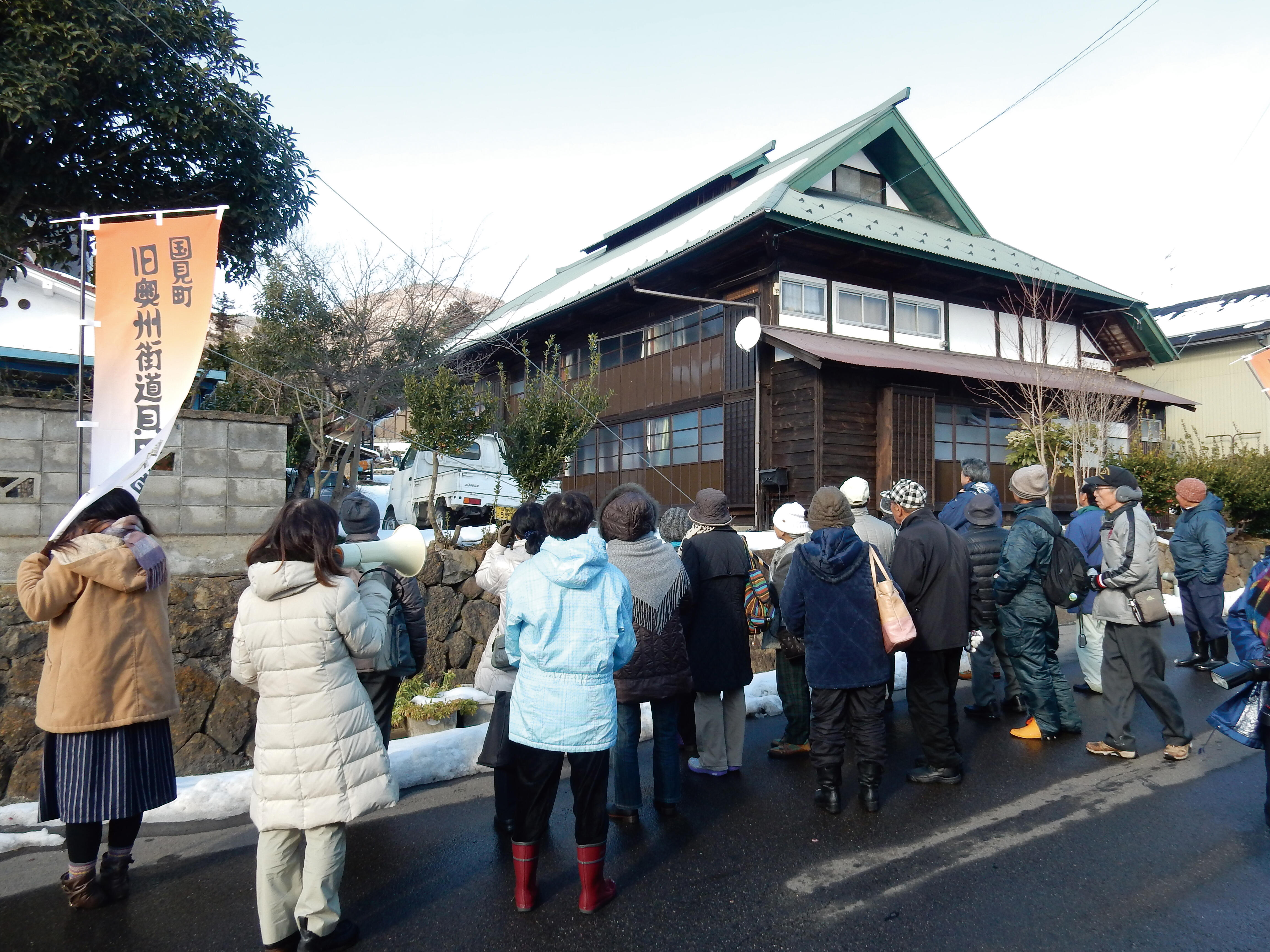
Photo.1
(4) Regarding the lack of citizen volunteers, by shifting the axis of routine activities to the university, the initial plan of citizen volunteers became impossible. Even then, we held night classes on the organization of documents called paleography training, which allowed people to participate after work. Nearby residents with interest responded to the advertisement by the Fukushima Shiryo-Network and attended voluntarily, taking photographs of ancient documents and making a list of contents with the students. They sometimes brought documents they had preserved themselves and took photographs. From 2014, we began holding a two-day summer camp in August, which has become an annual event where citizen volunteers both from, and outside of, the prefecture gather.
Regardless of participation in the activities at the university, citizen volunteers' interest in the local materials is quite high. Citizen volunteers gathered every time to participate in the preservation work of water-damaged materials at the Motomiya City History and Folklore Museum that was heavily damaged by the 2019 Typhon Hagibis [Photo.2: Preservation activities of water-damaged materials in Motomiya City]. Many of these volunteers are seniors who participate in cultural assets lectures and citizen circles. There was definitely something to note about the skills and personalities of staff who are routinely involved with citizens. Every community has a coordinator with skills to make projects work smoothly by connecting people. To say that communicating well with such a key person is an important element in succeeding in communicating with local communities and building networks is not an overstatement.
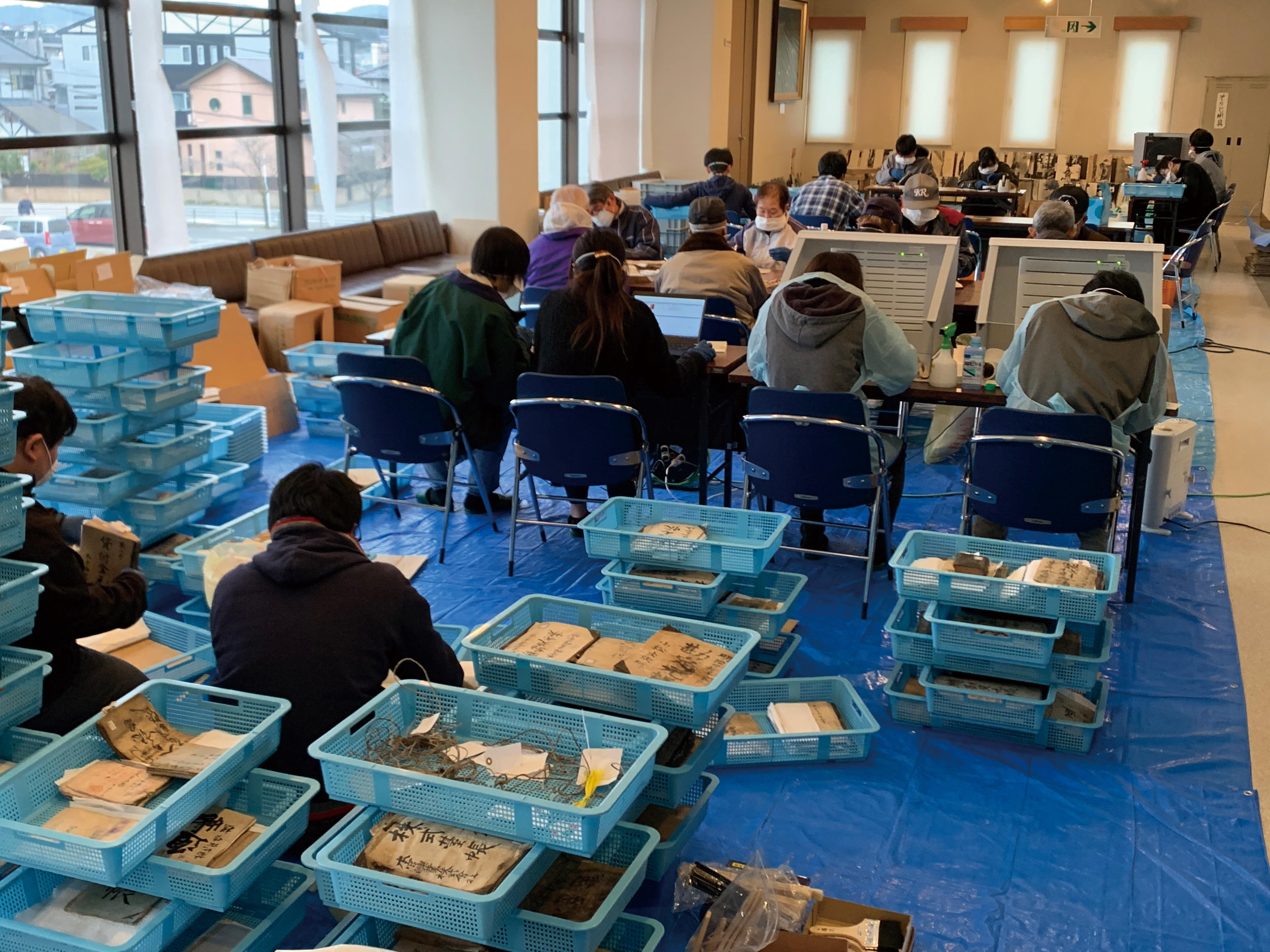
Photo.2
The last item (5) is a challenge unique to the position of liaison. The problem of inadequate temporary storage locations and spaces to work was resolved by the establishment of the Fukushima University Fukushima Future Center for Regional Revaitalization (presently Fukushima University CommunityFuture Design Center), completion of center buildings (presently converted to the Faculty of Food and Agricultural Sciences building), appointment of a historical document manager, and securing of a material storage room. Presently, we have shifted the storage to the Faculty of Administration & Social Sciences and are continuing the preservation work in practice rooms and such.
The Fukushima Shiryo-Network still does not have a corporate status and remains a voluntary organization acting as a liaison. The reason we are still able to work is that, for the last 12 years, ironically, Fukushima has faced numerous disasters. Material conservation activities in a nuclear disaster area are described with the words, "in progress," but the meeting of the Fukushima Prefecture Damaged Cultural Property Rescue Team Headquarters that audits the countermeasures was a place for the Fukushima Museum, Fukushima Prefectural Museum of Art, Fukushima Cultural Property Centre Shirakawa Branch (Mahoron), Fukushima Prefectural Archives, Fukushima University, and Fukushima Shiryo-Network to meet in person and continuously exchange information and opinions. During the 2019 Typhoon Hagibis, the mutual support agreement imagined by the prefecture was implemented early, and related organizations arrived to provide support. Among these were the promotors of the Fukushima Shiryo-Network. We heard encouraging statements that when these members participate in an official manner, they act as representative of the affiliated organization, but when volunteering they act as a member of the Fukushima Shiryo-Network. This was an opportunity to confirm the manner in which the Fukushima Shiryo-Network functions as a liaison. Cooperation between experts functioned in rescues during the 2021 and 2022 Fukushima Earthquakes, thereby preserving materials from the perspectives of diverse experts.
When we look back, the result was quite different from what was initially imagined. However, we were able to establish a certain path to solving the problems initially faced. We are halfway through building a comprehensive cultural asset network that connects the government, academia, business, and citizens of Fukushima. To this end, we need to value connections with municipalities, local communities, and owners that came out of the material rescue and preservation on site and keep building upon them. That being said, since disasters keep occurring in such a wide area, rescue and preservation of materials often remains incomplete as those tasked to do so cannot keep up. In parallel to material rescue activities, our next challenge is to build a foundation so that not only the continuing support from external sources, but also long-term material preservation activities can continue within local communities. A method that is usable for non-experts also needs to be established.
3. Launch of the Soma Shiryo-Network as a citizen network
While Shiryo-Networks are centered around universities, museums, and municipalities, the Soma Shiryo-Network is the first Shiryo-Network in Japan that is organized and operated by citizens [Photo.3: Preservation activities of fusuma underlay document rescued from the residence of SUZUKI Tatsuro].

Photo.3
The Soma Shiryo-Network was launched in September 2022, and consists of citizens and those born in Soma, with a Japanese painter, SUZUKI Tatsuro, as the representative. SUZUKI works on his creative activities in Tokyo, but after the Great East Japan Earthquake, he became involved in the support of his birthplace, Soma. His home in Soma is located on an estate that belonged to a samurai within the former Nakamura Domain. It is a building with both Japanese and Western aspects, built during the early Showa Era. The building withstood the Great East Japan Earthquake, but it suffered cracks in its pillars during the 2021 Fukushima Earthquake. While repairs and seismic updates were being considered, the 2022 Fukushima Earthquake occurred, which made the house lean. To see the main entrance built to welcome the head of the Soma household collapse due to the weight of ceramic roof tiles was especially shocking.
The Fukushima Shiryo-Network worked with the Miyagi Shiryo-Network, and following Shinchi Town in 2021, an interview of material owners began in 2022 in Kashima Ward, Minamisoma. At that time, the author was able to contact SUZUKI with the information received from NHK staff visiting Soma City.
While being a disaster victim, SUZUKI saw old buildings in the neighborhood destroyed, historical materials ruined, and traditional crafts facing extinction. He was alarmed by the loss of the history and traditional culture of Soma. SUZUKI's old classmate and the Chairman of the Fukushima Prefecture Folklore Society, IWASAKI Masaki, and KUSANO Kiyotaka, the Chairman of the Soma Chamber of Commerce and Industry who operates a construction business, were also concerned that houses were demolished after each disaster while vacant lands increased, thereby leading to the loss of the historical landscape of the town around a castle. In this manner, local volunteers and staff from the Fukushima and Miyagi Shiryo-Networks all met in person, proposing the launch of a network from the common understanding that there needs to be an entity that receives all the information gathered to rescue materials. With the proposal from KUSANO, this network was named the Soma Shiryo-Network. Subsequently, along with the rescue of materials at the SUZUKI home, members of the organization were carefully selected, and the network was officially launched in September 2022, six months after the Earthquake.
The Soma Shiryo-Network with its characteristics as the liaison is filled with residents of Soma, and those who were originally from Soma, with which the Fukushima and Miyagi Shiryo-Network are involved. It is an industry-academia-public network consisting of coordinators, the head of the Soma Chamber of Commerce and Industry, Soma Local Study Group chairman and members, Bajokai (Soma High School Alumni Association) chairman, Fukushima Prefecture Folklore Society chairman, chairman of the Association of People from Sendai, journalists, tax accountants, Tohoku Gakuin University faculty members, and Fukushima University faculty members, with the faculty members of Soma High School serving as secretary general. At its core is the connection between alumni of Soma High School and interested parties. According to SUZUKI, staff was recruited from those associated with Soma High School in consultation with TAKEUCHI Yoshiaki, the secretary general and faculty of the school. Soma High School is a long-established school that began as Fukushima Prefecture Daiyon Junior High School in 1898 (Soma High School Auditorium built during the time of the old Junior High School is a registered tangible cultural asset). Many talented graduates have come from this school, succeeding both locally and in a wide range of fields. For a community-based network, to have the alumni association of a long-established school as the parent body is an advantage. When attempting to communicate with a community from the outside, an existing network is extremely helpful. The reason they were able to put activities on track in just one year and achieve successive results is exactly because of this advantage. We are thankful for the keen eyes of SUZUKI and others who focused on the alumni network.
The advantages of a community-based citizen network are ease of collecting information on the location of materials to be rescued, and the ability to flexibly respond to sudden requests. When a long-established restaurant in the city decided to close and tear down the building owing to the earthquake damage and the sudden passing of the owner, local study group members led the preservation of the paintings created by the owner along with historical materials. Their passion was obvious during the exhibition of rescued materials planned in conjunction with the first symposium.
Another characteristic of the Soma Shiryo-Network is that the coordinator is a journalist who is also an alumnus. TERASHIMA Hideya presents activity reports based on detailed interviews on an online news site, TOHOKU360. A Shiryo-Network with a dedicated journalist is surely rare. Another strength of the Soma Shiryo-Network is that their activities are shared across Japan.
Although the Soma Shiryo-Network has its advantages, disadvantages also exist. Generally, the alumni organization is dominated by seniors who miss the old days. This is also the case for the Soma Shiryo-Network. This makes the Soma Shiryo-Network unsuitable for physical work on-site, for example. They have no experience in material rescue activities such as clearing a storage shed, no human resources, or expert knowledge and know-how of material preservation. However, a system is in place where the representatives of the Fukushima and Miyagi Shiryo-Networks play the role of coordinators to provide experience and know-how to the Network, reaching out to experts, students, alumni, and citizen volunteers to secure enough staff to provide support.
In this manner, in September 2023, a year after its launch, a symposium was held at Soma High School to share the results and challenges of the Soma Shiryo-Network with citizens of Soma and interested parties across Japan. On the day, more people attended than expected, and there were many reactions to the report and the presentation of new materials. The current challenges confirmed at the symposium were securing long-term storage for rescued materials and a framework for expanding the scope of citizen participation. Cooperation of the government is the most urgent challenge at the present time. In the long run, the organization must be set up and human resources must be secured to maintain the ground-breaking attempt known as the citizens' network. In addition, a culture needs to be established for citizens to protect their history with their own hands. We hope that the ground-breaking attempts of the Soma Shiryo-Network operated by the citizens are a major inspiration, encouraging similar attempts across Japan.
Conclusions
I must apologize that we could not meet the task of communicating with local communities that is needed in disaster countermeasures and materials rescue of local historical culture. However, I believe there were some key findings. In local communities, there are always people who care about the local history and culture, know the locations of materials, and are ready to act out of concern over loss. Furthermore, these people are often equipped with the characteristics to become local coordinators. To achieve results with material rescue and disaster prevention measures in communities, cooperation with key people from local communities must be prioritized, and the circle of cooperation with residents must spread from there. Connection with existing networks, such as local history study groups, neighborhood associations, citizen circles, and alumni associations is also quite effective. Building networks with the government is just starting in many areas, but if there are opportunities for a Shiryo-Network to participate, sharing of disaster-affected material information and setting up of support systems might drastically advance. The role demanded of Shiryo-Networks is to create close cooperation between experts and act as a liaison connecting existing and diverse networks horizontally. This must lead to the true meaning of "passing on cultural assets including those undesignated by the entire community and society," indicated in the outline of the Amended Cultural Assets Protection Act.
References
ABE Koichi and The Fukushima University Fukushima Future Center for Regional Revitalization (eds). Fukushima Saisei to Rekisi, Bunkaisan [Fukushima Revitalization and Historical/Cultural heritage]. Yamakawa Shuppansha, 2013.
ABE Koichi, "Fukushima no Genba kara furikaeru 11 nen [Reflections from Eleven Years after the Fukushima Disasters]. Shigaku, 92-1/2, 2023.
TERASHIMA Hideya, "Fukushimaokizishin [The 2002 Fukushima Earthquake]", in: TOHOKU360. https://tohoku360.com/316-soma/ (last viewed on September 12, 2023)
The Fukushima Prefecture Damaged Cultural Properties Relief Headquarters (ed). Fukushimakenhisaibunkazaitokyuenhonbu katsudohokokusho [The Fukushima Prefecture Damaged Cultural Properties Relief Headquarters Activity Report]. 2023.
Soma Shiryo-Network. "Soma no Rekishi wo Mamoru Tsutaeru" 2023 Hokokusho [2023 Annual Report]". 2024.


